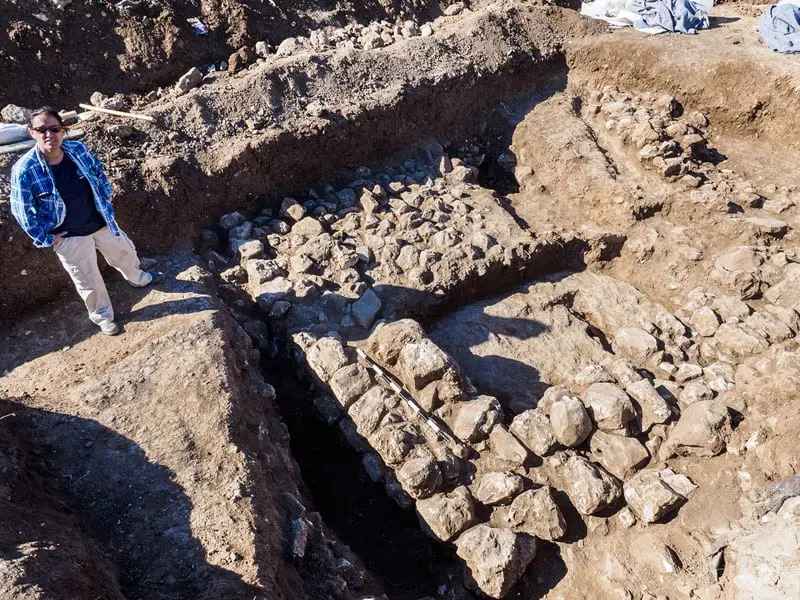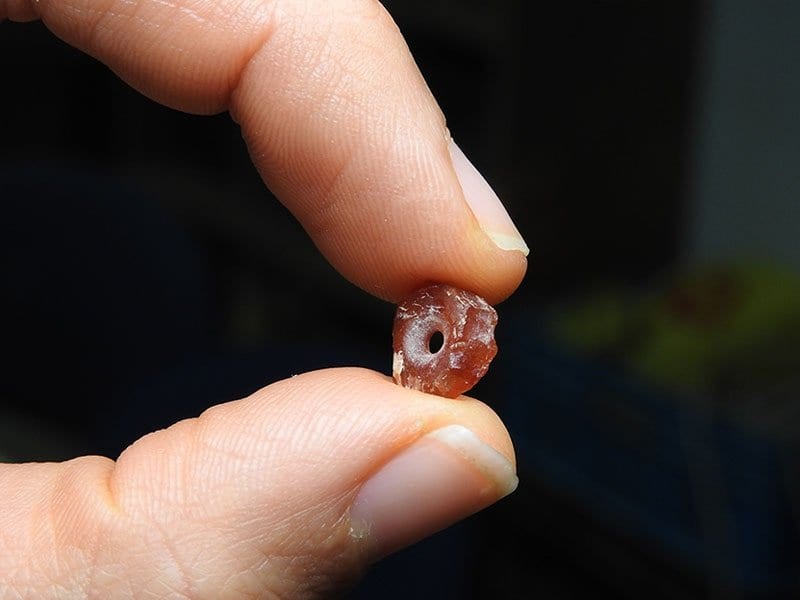New archaeological discoveries attest to the existence of a well-established settlement in the Jerusalem area as long ago as the fifth millennium BC, as well as to the fact that Jerusalem has been a prime real-estate location for 7,000 years.
Finds uncovered during archaeological excavations by the Israel Antiquities Authority during work on a new road in the Shuʻfat neighborhood in northern Jerusalem, initiated by Moriah – the Jerusalem Development Company.
An important discovery was recently unearthed in north Jerusalem when archaeological excavations on behalf of the Israel Antiquities Authority prior to the laying of a road in the Shuʻfat neighborhood – initiated and financed by Moriah, the Jerusalem Development Company –revealed the remains of an ancient settlement from the Chalcolithic period, approximately 7,000 years ago (fifth millennium BC).

During the Chalcolithic period, man started using tools made of copper (chalcos in Greek) for the first time while continuing to use tools made of stone (lithos), hence the name given to the period. According to Dr. Omri Barzilai, Head of the IAA’s Prehistory Branch, “The Chalcolithic period is known in the Negev, the coastal plain, the Galilee and the Golan, but is almost completely absent in the Judean Hills and Jerusalem.
Although in recent years we have discovered a few traces of Chalcolithic settlements, such as those at Abu Gosh, Motza Junction, and the Holyland compound in Jerusalem, they have been extremely sparse. Now, for the first time, we have discovered significant remains from 7,000 years ago.”
The excavation exposed two dwelling houses with well-preserved remains and floors containing various installations as well as pottery vessels, flint tools, and a basalt bowl, all typical of the period. The construction phases and signs of their maintenance show that the buildings were used for a considerable time.
According to Ronit Lupo, director of excavations for the Israel Antiquities Authority: “On completion of the excavations at Shuʻfat, it is quite evident that there was a thriving settlement in the Jerusalem area in ancient times. Thousands of years later, the buildings uncovered are of a standard that would not fall short of Jerusalem’s architecture. This discovery represents a highly significant addition to our research of the city and the vicinity.
Apart from the pottery, the fascinating flint finds attest to the livelihood of the local population in prehistoric times: Small sickle blades for harvesting cereal crops, chisels and polished axes for building, borers and awls, and even a bead made of carnelian (a gemstone), indicating that jewelry was either made or imported.
The grinding tools, mortars and pestles, like the basalt bowl, attest to technological skills as well as to the kinds of crafts practiced in the local community. We also recovered a few bones of sheep/goat and possibly cattle; these will be analyzed further in the Israel Antiquities Authority laboratories, permitting us to recreate the dietary habits of the people who lived here 7,000 years ago and enhancing our understanding of the settlement’s economy.”







